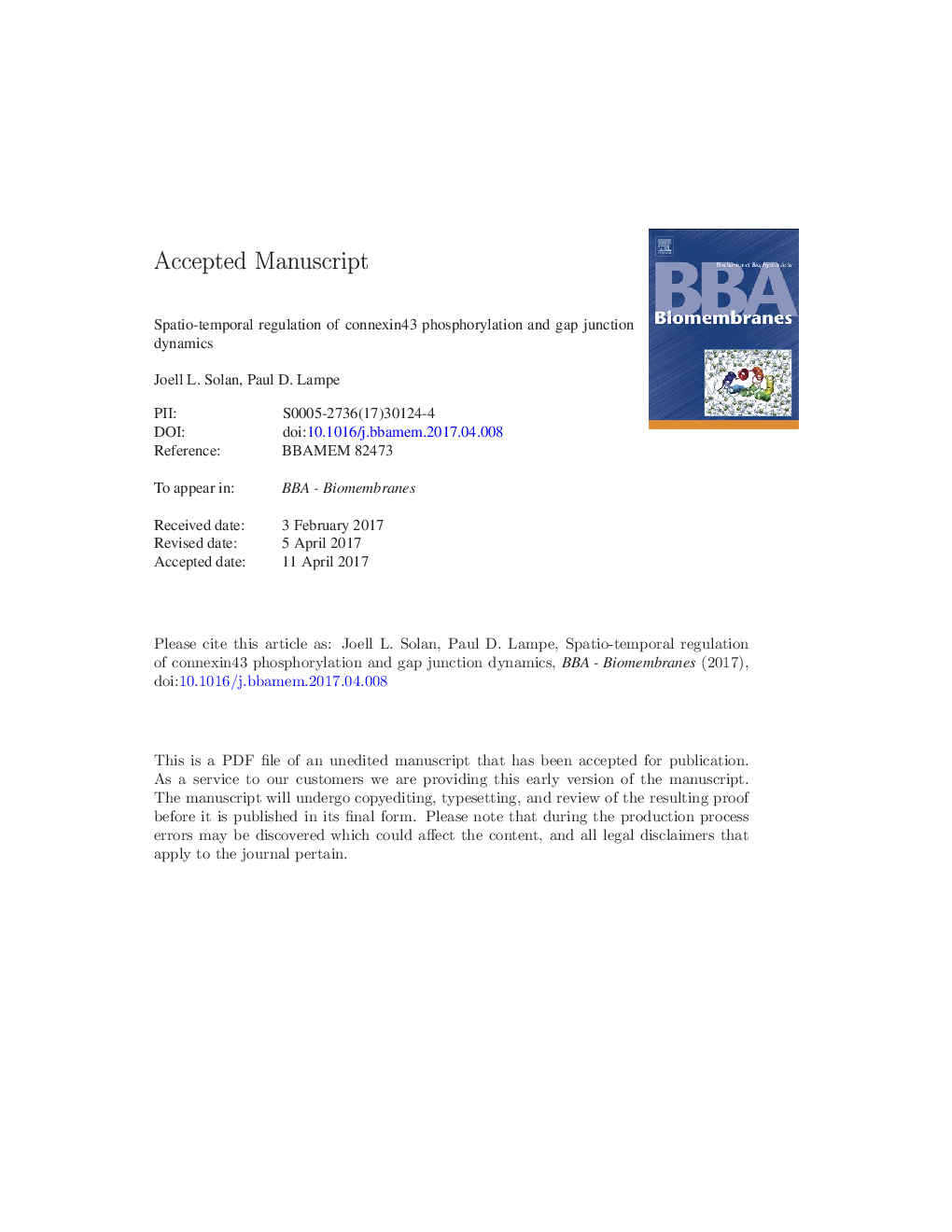| Article ID | Journal | Published Year | Pages | File Type |
|---|---|---|---|---|
| 8299800 | Biochimica et Biophysica Acta (BBA) - Biomembranes | 2018 | 26 Pages |
Abstract
Gap junctions are specialized membrane domains containing tens to thousands of intercellular channels. These channels permit exchange of small molecules (<Â 1000Â Da) including ions, amino acids, nucleotides, metabolites and secondary messengers (e.g., calcium, glucose, cAMP, cGMP, IP3) between cells. The common reductionist view of these structures is that they are composed entirely of integral membrane proteins encoded by the 21 member connexin human gene family. However, it is clear that the normal physiological function of this structure requires interaction and regulation by a variety of proteins, especially kinases. Phosphorylation is capable of directly modulating connexin channel function but the most dramatic effects on gap junction activity occur via the organization of the gap junction structures themselves. This is a direct result of the short half-life of the primary gap junction protein, connexin, which requires them to be constantly assembled, remodeled and turned over. The biological consequences of this remodeling are well illustrated during cardiac ischemia, a process wherein gap junctions are disassembled and remodeled resulting in arrhythmia and ultimately heart failure. This article is part of a Special Issue entitled: Gap Junction Proteins edited by Jean Claude Herve.
Keywords
ZO-1EGFConnexin43CX43tPAPKCcGMPcAMPERK1/2Cyclic adenosine monophosphateSodium dodecylsulfate-polyacrylamide gel electrophoresisSDS-PAGEIntercalated discepidermal growth factorgap junctionPhosphorylationcyclic guanosine monophosphateZonula occludens-1Protein kinase CKinaseextracellular signal-related kinase
Related Topics
Life Sciences
Biochemistry, Genetics and Molecular Biology
Biochemistry
Authors
Joell L. Solan, Paul D. Lampe,
